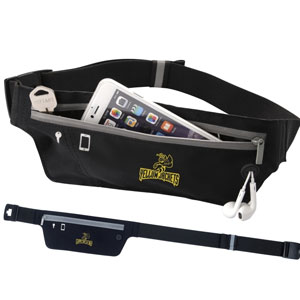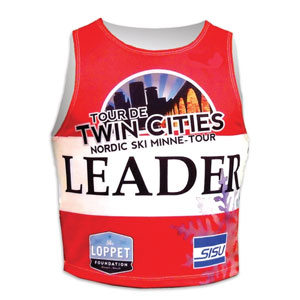Don’t pass up branding opportunities at your next 5k run/walk event.
A growing trend in marketing is hosting and sponsoring a sporting event to gain brand awareness. If this is your first time hosting or sponsoring a race event, perhaps a 5K is the place to start. More people than ever are challenging themselves in running races for fitness and fun. It’s a valuable demographic to reach: runners are most often college-educated men and women in their mid-thirties. Races are a great way to get brand exposure as runners engage with your brand while sampling your products and see your logo on race shirts, hats, signs, and giveaways.
 Race Organization and Development.
Race Organization and Development.
Timing the event is a large part of your budget, so getting the right one for your needs is important. Pick a timer that offers a user-friendly experience and decent technology. Send out a bid request to several timers in your area and include pricing, read rates on the chips, and references.
The location where the race will be held can be determined by locating a scenic area close to where your prospective runners live. Create a race course that is an engaging and unique experience, such as gradual downhills, challenging uphills, and plenty of flat stretches with scenery and landmarks. A flat course with little to no uphill climbs usually draws more participants.
Select a race name that represents its personality and experience. “The 10K Milwaukee Madness” feels different in intensity than “The 5K Toledo Bunny Hop.” Races are traditionally named by the town/city, length, course, or theme.
Design a website to provide race and registration information including pricing, deadlines, course maps, hotels, race date/time, etc. Contact a web-savvy friend, hire a web developer, or use a free site such as www.weebly.com.
Online registration increases if it is a simplified online process. Choose an online provider that utilizes easy checkout and won't require runners to create accounts. To determine cost, compare top race registration providers’ rates and benefits.
 Open race registration early for greater participation. The more people that sign up early, the more they spread the word and refer others to sign up. Annual events open registration for next year’s event immediately after this year’s event ends.
Open race registration early for greater participation. The more people that sign up early, the more they spread the word and refer others to sign up. Annual events open registration for next year’s event immediately after this year’s event ends.
To advertise the race, focus on your target audience: the runners. Include the race name, date, time, location, registration site, as well as entertainment, food, giveaways, etc.
Advertising could include posters to put in running/athletic stores, ads in running magazines and websites, in local papers, on the radio or cable, and even at other races (your flier in runner’s race bag).
Sponsorship involves contacting local businesses to provide products or services such as coupons for gear and free food samples to include in each race bag, or even money contributed for sponsorship. Permits can be obtained from the local government. You will need to provide insurance coverage to receive a permit. Coverage will protect your company and those responsible for the event.
Racer Support and Appreciation
Race Bags are given to every registered runner. It’s a great opportunity to get brand-activated products/services into the hands of every runner.
Inside each could be:
- A race shirt (see below)
- Custom runner’s bib along with safety pins to put on the runner’s bib that holds the time chip (unless another technology is being used).
- Product samples such as protein gels, health bars, or sun block
- Coupons for services such as car washes, personal trainers, dentists, or other business offerings
Enticing products include:
Race Shirts are given to every runner. It’s usually a dry-fit shirt with the race name or logo on the front, and sponsor logos on the back. Make sure to order shirts a couple of weeks before the race, with a follow-up order a couple of days before the race for any late registrations.
Aid Stations and hydration are so important at races! Make sure to provide plenty of water and electrolyte beverages to runners. Consider the weather conditions in your area and the length of the race to determine how many stations are necessary for your race. Plenty of food that’s high in protein should be available in the finish area. Often you can find a local market or restaurant to provide food for your race as a sponsor!
Medals aare given to participants when they cross the finish line for longer races and youth programs. Medals can also be used as placement awards (see below). In your first year, you may want to make your medals locally so you can order closer to the race date.
Awards are given for best times by age division, first to third or even fifth places. Some races award money, while others provide sponsored gift certificates or medals.

Featured Products
Crowd, Course and Clean-up Logistics
Portable restrooms need to be available to accommodate runners. At a minimum, make sure there is one located at the beginning and end of the race.
Volunteers can be found at student volunteer organizations, businesses, scout troops, youth organizations, and race volunteer lists to name a few. To show appreciation for their service, volunteers typically receive a “volunteer” t-shirt that’s different than the racers’ shirts.
Event safety coordination involves the police and security for the race, ensuring that you have proper traffic safety devices like cones, and crowd control barricades.
Medical considerations for 5K runners usually don’t require much equipment, but longer races can require more preparation. Consult a sports medicine professional to determine the specific needs for your event.
Course clean-up requires a fresh crew of people specifically dedicated to the task. People working the race all day will be too exhausted.
The content on this page has been created by the Great Idea People at
and powered by
.
Planning Resources for Your Next Run/Walk Event
Tips, checklists and promotional ideas to make your race a runaway success.